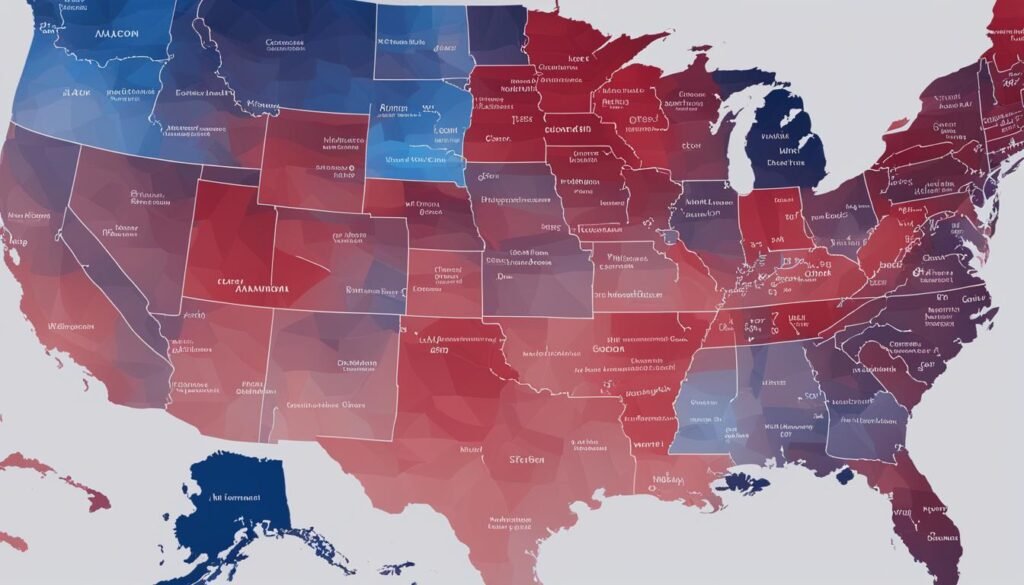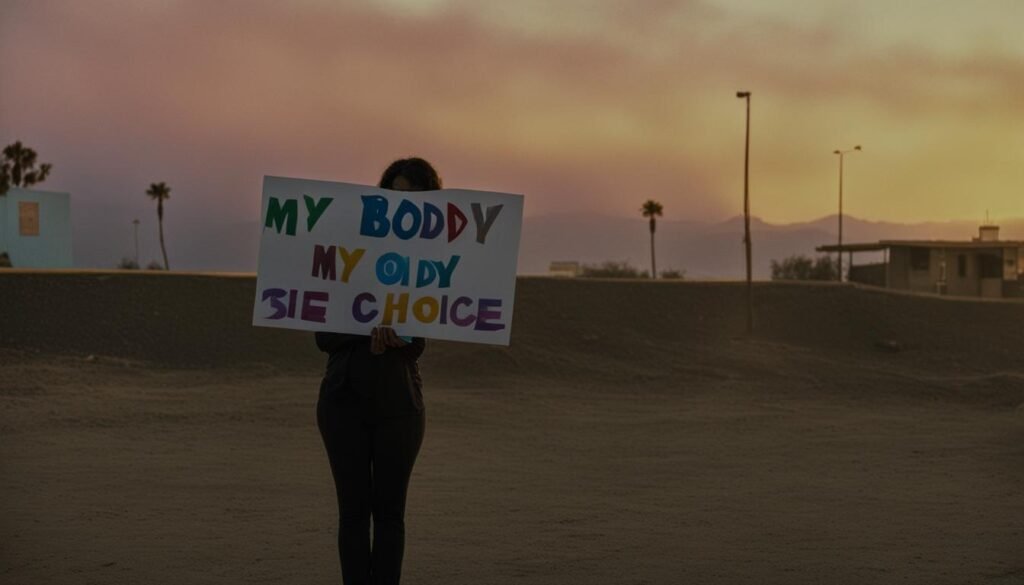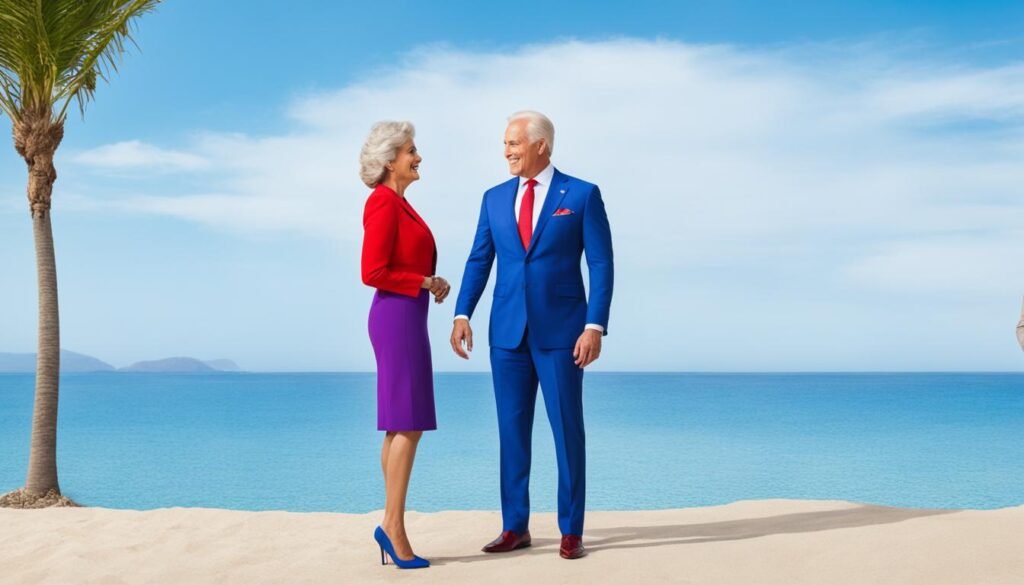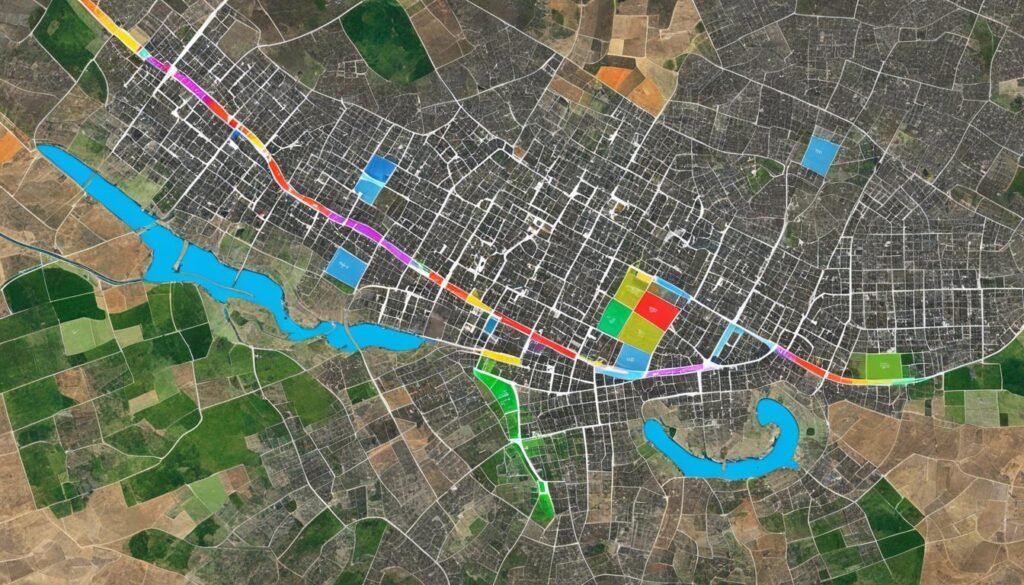According to data from various sources, the following states are considered to be the most liberal in the USA. These states have consistently voted for Democratic candidates in elections and tend to have progressive policies and legislation that support issues such as LGBTQ+ rights, healthcare access, and environmental protection. The rankings are based on a combination of factors such as the percentage of Democratic voters, liberal legislation, and left-leaning policies.
Key Takeaways:
- California, Massachusetts, New York, Oregon, and Washington are among the top ranked most liberal states in the USA.
- Liberal states often implement progressive policies and legislation that promote equality, social justice, and individual rights.
- Factors such as demographics, education levels, and historical voting patterns influence a state’s political ideology.
- Liberal governance in states can have a significant impact on the quality of life for residents.
- Political ideologies can vary within states and communities, and rankings of the most liberal and conservative states can change over time.
Ranking of the Most Liberal States in the USA
Based on analysis and research, the top ranked most liberal states in the USA are typically California, Massachusetts, New York, Oregon, and Washington. These states have a high concentration of Democratic voters, consistently elect liberal politicians, and have implemented progressive policies on a range of issues. Other states that often rank highly in terms of liberalism include Vermont, Colorado, Connecticut, and Delaware.
Liberal states are known for their progressive views and policies. They prioritize issues such as LGBTQ+ rights, healthcare access, environmental protection, and social justice. These states tend to have a higher percentage of Democratic voters, which influences their political landscape. By consistently electing liberal politicians, they ensure that progressive policies are implemented.
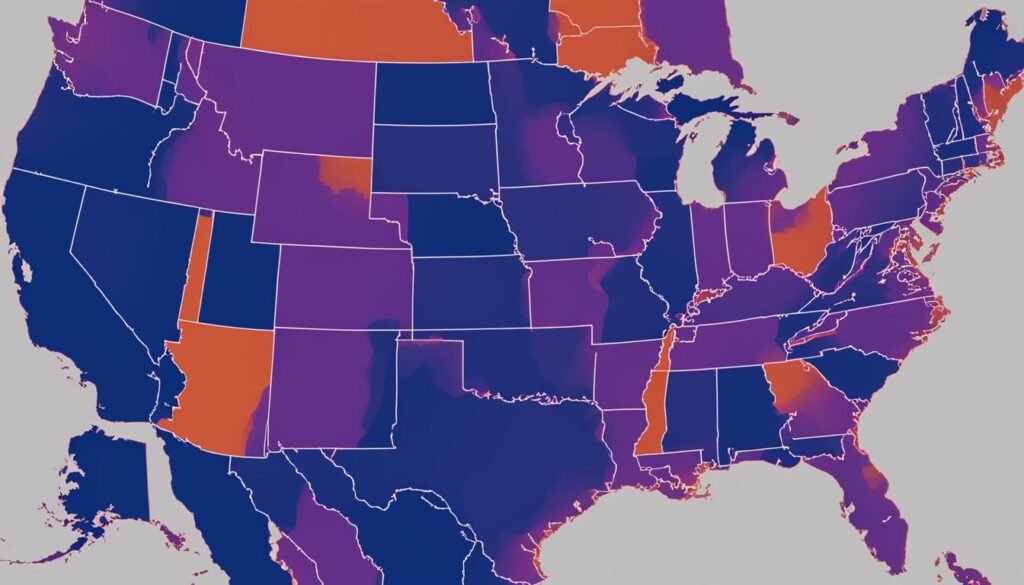
California
California is often viewed as one of the most liberal states in the USA. It has a strong Democratic presence and has implemented various progressive policies. The state is known for its commitment to environmental conservation, LGBTQ+ rights, and healthcare access. It has also been a leader in renewable energy development and combating climate change.
Massachusetts
Massachusetts is another state with a high ranking in terms of liberalism. It has a history of progressive policies and legislation, including universal healthcare coverage under the Massachusetts Health Connector. The state has also been at the forefront of LGBTQ+ rights, legalizing same-sex marriage in 2004, a decade before it was legalized nationwide.
New York
New York is often associated with liberal ideology, particularly in regions such as New York City. The state has implemented progressive policies on various fronts, including a minimum wage increase, gun control measures, and protections for immigrant rights. New York is also actively working towards reducing greenhouse gas emissions and promoting renewable energy.
Oregon
Oregon has a reputation for being politically progressive, especially in the Portland metropolitan area. The state has enacted policies such as reproductive rights protection, strict environmental regulations, and expanded healthcare access. Oregon is also known for its support of alternative forms of transportation and sustainable urban planning.
Washington
Washington state consistently ranks among the most liberal states in the country. It has a history of supporting liberal policies, including marriage equality and marijuana legalization. The state has implemented measures to address climate change, promote clean energy, and advance social justice. Washington is also home to some of the largest technology companies, which contribute to its progressive and innovative environment.
These states, along with others, continue to lead the way in embracing liberal values and implementing progressive legislation. Their commitment to equality, social justice, and individual rights sets them apart and influences national conversations on key issues.
Let’s now explore the factors that can influence a state’s political ideology in the USA.
Factors Influencing State Political Ideology
Several factors contribute to a state’s political ideology. These factors include demographics, education levels, urban vs rural divide, and historical voting patterns.
One of the significant influences on a state’s political compass is the size and composition of its population. States with larger urban areas, such as California and New York, tend to be more liberal. These urban centers attract diverse populations and progressive-minded individuals, shaping the overall political climate of the state.
Education levels also play a role in political ideology. States with higher education attainment, such as Massachusetts and Connecticut, tend to lean more liberal. Higher education fosters critical thinking, exposure to diverse perspectives, and a greater understanding of social issues, all of which can contribute to more progressive ideologies.
Moreover, the urban vs rural divide influences a state’s political ideology. Rural areas, often characterized by traditional values and social conservatism, lean more conservative politically. States like Texas and Alabama have distinct rural-urban divides, contributing to their conservative leanings.
Historical voting patterns and political traditions can also shape a state’s political ideology. For example, states in the Northeast, such as Vermont and Rhode Island, have a historically strong tradition of progressive politics. These states have consistently voted for Democratic candidates and embrace liberal values.
Political Variation within States
While a state may be generally considered liberal, it’s important to recognize that political views can vary within states. For instance, in liberal states like California and New York, there are conservative pockets where Republican ideologies prevail. Similarly, conservative states like Mississippi and Arkansas may have more liberally-minded communities.
Understanding the complexities of political views within states is crucial in comprehending the overall political landscape and promoting balanced discussions.
By taking these factors into account, we can better understand how states’ political ideologies are shaped and how they form the diverse political map of the United States.
Progressive Policies and Legislation in Liberal States
Liberal states are known for their commitment to implementing progressive policies and legislation that align with their ideology. These states prioritize issues such as equality, social justice, and individual rights, and work towards creating a more inclusive society.
Expanding Access to Healthcare
One of the key areas where liberal states demonstrate their progressive values is in healthcare. Many of these states have taken steps to expand access to healthcare for their residents, often by implementing state-run healthcare programs or expanding Medicaid coverage. By prioritizing healthcare accessibility, these states aim to ensure that everyone has the opportunity to receive quality medical care.
Raising the Minimum Wage
States with liberal policies often take the lead in advocating for a higher minimum wage. Recognizing the importance of economic justice, these states have implemented laws to gradually increase the minimum wage, allowing workers to earn a living wage that reflects the cost of living in their respective states. By doing so, they aim to tackle income inequality and improve the standard of living for workers.
Enacting Stricter Gun Control Laws
Another area where liberal states have shown progressive leadership is in gun control legislation. These states have implemented stricter regulations and background check requirements to enhance public safety and reduce gun violence. By enacting comprehensive gun control laws, they strive to strike a balance between protecting Second Amendment rights and ensuring public safety.
Legalizing Marijuana
Liberal states have taken a more progressive stance on the legalization of marijuana. These states recognize the potential benefits of legalizing and regulating marijuana for both medicinal and recreational use. By legalizing marijuana, they aim to generate tax revenue, reduce criminalization, and provide access to alternative and potentially safer treatments for certain medical conditions.
Protecting LGBTQ+ Rights
States with liberal legislation often prioritize protecting LGBTQ+ rights. They have enacted laws to prohibit discrimination based on sexual orientation and gender identity in areas such as employment, housing, and public accommodations. These states aim to create an inclusive environment where LGBTQ+ individuals can live without fear of discrimination and have equal rights and opportunities.

Supporting Environmental Initiatives
Liberal states are at the forefront of environmental initiatives and the fight against climate change. These states prioritize renewable energy development, invest in green infrastructure, and implement policies to reduce greenhouse gas emissions. By taking action to protect the environment, they aim to mitigate the effects of climate change and create a sustainable future for generations to come.
It’s important to note that the specific policies and legislation can vary from state to state, as each state has its own unique priorities and challenges. However, the overall goal of states with liberal policies is to promote progressive values, advance social justice, and create a more inclusive and equitable society for all.
The Impact of Liberal Governance
Liberal governance in the United States has a profound effect on the lives of its residents. States with progressive governance prioritize social welfare programs, invest in education and infrastructure, and promote inclusivity. These liberal states often have lower poverty rates, higher rates of access to healthcare, and stronger social safety nets.
One of the key benefits of liberal governance is the emphasis on social welfare programs. These programs provide assistance to vulnerable populations, ensuring that basic needs are met and that individuals have access to resources and support. Liberal states recognize the importance of providing a safety net for their citizens and work towards reducing inequality and promoting fairness.
Furthermore, liberal states place a strong emphasis on education and infrastructure. They allocate significant resources to improve the quality of education, ensuring that their residents have access to top-notch schools and universities. Additionally, these states invest in infrastructure projects that enhance connectivity, transportation systems, and public amenities, ultimately improving the overall quality of life.
Liberal governance also leads to higher rates of access to healthcare. These states tend to prioritize healthcare policies and legislation that promote affordable and comprehensive coverage for all residents. By expanding access to healthcare services, liberal states ensure that individuals have the resources and support they need to maintain their well-being.
Leading the Way in Innovation
Liberal states often serve as models for other states by leading the way in innovative policies. They are at the forefront of implementing forward-thinking initiatives that address pressing issues such as environmental conservation and renewable energy development. By adopting progressive practices and embracing new technologies, these states set a standard for others to follow, catalyzing positive change on a national scale.
The Criticisms and Challenges
Despite the many benefits, liberal governance is not without its criticisms and challenges. Critics argue that the higher taxes associated with progressive policies can burden individuals and businesses, potentially stifling economic growth. They also contend that extensive government intervention in the economy may hinder individual freedoms and entrepreneurship.
However, liberal states continue to strive for a balance between social welfare and economic prosperity. They navigate these challenges while focusing on creating inclusive communities, protecting individual rights, and advancing progressive agendas that align with the values of their residents.
Overall, liberal governance in the United States has a significant impact on the well-being and quality of life for residents. These states prioritize social welfare programs, invest in education and infrastructure, and serve as pioneers in innovative initiatives. While there are criticisms and challenges, the positive outcomes of progressive policies speak to the lasting effect of liberal governance.

Conclusion
In conclusion, the most liberal states in the USA embody a commitment to progressive values and policies. These states, such as California, Massachusetts, and New York, prioritize individual rights, social justice, and environmental conservation. They have implemented liberal legislation that supports issues like LGBTQ+ rights, healthcare access, and environmental protection.
However, it’s crucial to recognize that political ideologies are nuanced and can vary within states and communities. In some heavily urban areas, liberal values are more prevalent, while conservative leanings may be more prominent in rural regions. Additionally, political landscapes evolve over time, and the rankings of the most liberal and conservative states are not static.
When discussing political ideology in the USA, it is vital to consider a range of factors that influence a state’s political climate. Some states may lean towards centrist or moderate positions, while others may have far-right ideologies. It is also worth noting that progressive legislation and liberal values may extend beyond the traditionally recognized liberal states, as states across the country strive to address pressing social issues and advance progressive agendas.
In summary, understanding the landscape of the most liberal and conservative states, as well as states with moderate or centrist ideologies, provides valuable insights into the diverse political fabric of the United States. By considering the presence of liberal values and progressive legislation, we can appreciate the varying approaches and priorities that shape each state’s governance and decision-making processes.
FAQ
What are the most liberal states in the USA?
Based on analysis and research, the top ranked most liberal states in the USA are typically California, Massachusetts, New York, Oregon, and Washington. Other states that often rank highly in terms of liberalism include Vermont, Colorado, Connecticut, and Delaware.
What factors contribute to a state’s political ideology?
Several factors contribute to a state’s political ideology, including demographics, education levels, urban vs rural divide, and historical voting patterns. For example, states with larger urban areas tend to be more liberal, while rural areas may lean conservative. States with higher education levels and younger populations are more likely to have liberal ideologies.
What kind of policies and legislation do liberal states implement?
Liberal states often implement progressive policies and legislation that align with their ideology. This can include measures such as expanding access to healthcare, raising the minimum wage, enacting stricter gun control laws, legalizing marijuana, and protecting LGBTQ+ rights. These states may also support environmental initiatives, renewable energy development, and efforts to combat climate change.
What is the impact of liberal governance in states?
Liberal governance in states can have a significant impact on the quality of life for residents. These states tend to prioritize social welfare programs, invest in education and infrastructure, and promote inclusivity. They may have lower poverty rates, higher rates of access to healthcare, and stronger social safety nets. Liberal states also often lead the way in innovative policies and serve as models for other states.
Is the ranking of the most liberal and conservative states static?
The rankings of the most liberal and conservative states are not static and can change over time as political landscapes evolve. It is important to consider a range of factors and understand the nuances of each state’s political climate when discussing political ideology in the USA.

